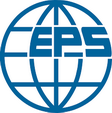Study of the influence of the environment on the efficiency of induction heating of low-temperature heat pipe
DOI:
https://doi.org/10.15330/pcss.25.4.787-794Keywords:
heat pipe, induction heating, core, coolant, frequency, powerAbstract
The influence of ferromagnetic materials of three cylindrical structural steel cores and a spiral weave magnetic stainless-steel core on the efficiency of induction heating of the coolant in a low-temperature oppression heat pipe is investigated. Two cores were intended for use under the oppression layer, and two - behind the oppression layer made of stainless mesh without magnetic properties. The efficiency of induction heating using a cylindrical coil wound on the surface of the tube was studied. An experimental setup was assembled from a heat pipe, a cylindrical induction coil put on its lower part, a pulse generator, an amplifier, a power switch, a wattmeter, two thermocouples and a timer. Experiments have shown that at a low frequency of heat pipes with a vertical orientation, with a decrease in the wall thickness of the iron cylindrical core and an increase in its radius, the efficiency of induction heating increases. For heat pipes with arbitrary orientation in space, the highest efficiency of induction heating is provided by a cylindrical thin-walled single-layer core placed after the oppression layer. But the highest operational reliability and high efficiency of induction heating can be provided by a solid cylindrical core, or a spiral-weave core made of magnetic stainless steel AISI 430 or 439, wound on a heat-resistant plastic frame with holes for the coolant movement. The maximum radius and minimum mass of the core should provide the highest intensity of heating of the coolant per unit of time.
References
P.M.E. Vijayakumar, S. Sajairaj, R. Santhoshkumar, Review on conventional, modern heat pipes and its applications, International Research Journal of Engineering and Technology, 3(10), 513 (2016); https://www.irjet.net/archives/V3/i10/IRJET-V3I1099.pdf.
B. Abdullahi, K. Al-dadah Raya, S. Mahmoud, Thermosyphon Heat Pipe Technology, IntechOpen, 1, (2019); http://dx.doi.org/10.5772/intechopen.85410.
S. H. Noie, M. R Sarmasti Emami, M. Khoshnoodi, Effect of inclination angle and filling ratio on thermal performance of a two-phase closed thermosyphon under normal operating conditions, Heat Transfer Engineering, 28(4), (2007); https://doi.org/10.1080/01457630601122997.
V. Prokopiv, I. Horichok, T. Mazur, O. Matkivsky, L. Turovska, Thermoelectric materials based on samples of microdispersed PbTe and CdTe. Proceedings of the 2018 IEEE 8th International Conference on Nanomaterials: Applications & Properties (NAP - 2018), Zatoka, Odesa Region, (2018); https://doi.org/10.1109/NAP.2018.8915357.
Mrs. J. Emeema. Heat Pipes – A Review on Performance Parameters, International Journal of Creative Research Thoughts, 6(2), 746 (2018); https://ijcrt.org/papers/IJCRT1892456.pdf.
V. Agarwal, S. Jain, K. Vya, G. Jain, A Review Paper on Role of Heat Pipes in Cooling, International Journal of Emerging Trends in Electrical and Electronics, 11(2), 154, (2015); https://www.academia.edu/29562085/A_Review_Paper_on_Role_of_Heat_Pipes_in_Cooling_CTAE_1_2_GITS_3_4?uc-g-sw=85697005.
I.R. Vashchyshak, S.P. Vashchyshak, V.D. Myndyuk, Energy-efficient heating system for the premises of technological gas transportation facilities using steam-droplet heaters, Oil and Gas Energy 2017: Int. science and technology conf., Ivano-Frankivsk, May 15-19, 2017: collection of abstracts adds. – Ivano-Frankivsk, 285 (2017); http://elar.nung.edu.ua/handle/123456789/5842.
T. Mazur, V. Prokopiv, L. Turovska, Quasi-chemistry of intrinsic point defects in cadmium telluride thin films, Molecular Crystals and Liquid Crystals. 671(1), 85(2018); https://doi.org/10.1080/15421406.2018.1542088.
Abdullahi, A. El-Sayed, R. Khalid Al-Dadah, S. Mahmoud, A. Fateh Mahrous, N. Mu’az Muhammad, S. Bello Abbakar, Experimental and Numerical Investigation of Thermosyphon Heat Pipe Performance at Various Inclination Angles, Journal of Advanced Research in Fluid Mechanics and Thermal Sciences, 44(1), 85 (2018); https://www.researchgate.net/publication/324983581_Experimental_and_Numerical_Investigation_of_Thermosyphon_Heat_Pipe_Performance_at_Various_Inclination_Angles#fullTextFileContent.
X. Lu, Y. Li, Z. Sun, Research Progress and Prospect of Heat Pipe Capillary Wicks, Journal of Thermal Science and Engineering Progress, 28, 100 (2022); http://dx.doi.org/10.5098/hmt.18.24.
K. Keishi, М. Akio, Experimental Study on Thermal Performance of a Loop Heat Pipe with Different Working Wick Materials, Energies, 14(9), 2453 (2021); http://dx.doi.org/10.3390/en14092453.
V. Kopei, O. Onysko, C. Barz, P. Dašić, V. Panchuk, Designing a multi-agent plm system for threaded connections using the principle of isomorphism of regularities of complex systems, Machines, 11(2), 263 (2023); https://doi.org/10.3390/machines11020263.
S. H. Uddin, Md. Islam, F. Jarrar, I. Janajreh, Experimental Study on the Effect of Water as a Working Fluid in Aluminium Heat Pipes, Journal of Thermal & Environmental Engineering, 20 (1), (2023); https://iasks.org/articles/ijtee-v20-i1-pp-01-05.pdf.
R. Cai, P. Bai, H. Wang, Y. Luo, X. Cen, G. Wu, S. Li, G. Zhou, Experimental investigation of the heat transfer performance of a novel double independent chambers casing heat pipe applied for heat dissipation at low temperatures, Applied Thermal Engineering, 188, 116508(2021); https://doi.org/10.1016/j.applthermaleng.2020.116508.
J. Vaibhav, J. Harsh, M. Lakshay, Thermodynamic Performance Evaluation of Heat Pipe, International Journal of Advance Research and Innovation, 6(1), 55 (2018); https://doi.org/10.51976/ijari.611810.
D.S. Naruka, R. Dwivedi, P.K. Singh, Experimental inquisition of heat pipe: performance evaluation for different fluids, Experimental Heat Transfer A Journal of Thermal Energy Generation, Transport, Storage and Conversion, 1 (2020); https://doi.org/10.1080/08916152.2020.1713254.
R.D. Bhagat , S.R. Thakare , S.C. Makwana, Experimentation to predict the thermal performance of conventional heat pipe with water and hydrocarbon as working fluid, International Journal of Research in Engineering and Technology, 5(3), 1 (2016); https://ijret.org/volumes/2016v05/i03/IJRET20160503073.pdf.
B. Dzundza, O. Kostyuk, & T. Mazur, Software and Hardware Complex for Study of Photoelectric Properties of Semiconductor Structures. 2019 IEEE 39th International Conference on Electronics and Nanotechnology (ELNANO), Kyiv, 16-18 April, (2019); https://doi.org/10.1109/ELNANO.2019.8783544.
G.V.R. Seshagiri Rao, U. Ramakanth & Suryaprakash, Experimental investigation of heat transfer characteristics of the heat pipe, International Journal of Mechanical and Production Engineering Research and Development, 7(5), 209 (2017); https://www.academia.edu/35534469/EXPERIMENTAL_INVESTIGATION_OF_HEAT_TRANSFER_CHARACTERISTICS_OF_THE_HEAT_PIPE .
I. R. Vashchyshak, O.P. Vashchyshak, A.V. Yavorsky, Ways to improve energy efficiency of buildings of oil and gas complex facilities, Scientific Bulletin of the Ivano-Frankivsk National Technical University of Oil and Gas, 1(36), 176 (2014); http://elar.nung.edu.ua/handle/123456789/2560.
I.R. Vashchyshak, S.P. Vashchyshak, O.V. Popovych, E.R. Dotsenko, Improvement of steam-droplet heaters for heating systems of premises and buildings, Methods and devices for quality control, 39(2), 68 (2017); http://elar.nung.edu.ua/handle/123456789/6534.
S.P. Vashchyshak, T. Lammert, Electronic control of the temperature regime of the steam droplet heater of the heating system, Applied scientific and technical research: III International. science and practice conference, Ivano-Frankivsk: Academy of Technical Sciences of Ukraine (April 3-5, 2019), p. 110, Ivano-Frankivsk: Symphony forte (2019); https://ukrtsa.org.ua/wp-content/uploads/2022/02/ConferenceUTSA2019.pdf .
Z. Liu, D. Yuan, Y. Hao, X. Li, L. Yang, J. Yao, Experimental study on heat transfer performance of high temperature heat pipe under axial non-uniform heat flux, Applied Thermal Engineering, 236, 121817 (2024); https://doi.org/10.1016/j.applthermaleng.2023.121817.
H. Nykyforchyn, V. Kyryliv, O. Maksymiv, V. Kochubei, R. Boyko, V. Dovhunyk, Wear resistance of the surface nanocrystalline structure under an action of diethyleneglycol medium, Applied Nanoscience, 9(5), 1085 (2019); https://doi.org/10.1007/s13204-018-0690-3.
T. Mazur, M. Mazur, M. Halushchak, Surface-Barrier CdTe Diodes for Photovoltaics, Journal of Nano- and Electronic Physics, 15(2), 02004-1 (2023); https://doi.org/10.21272/jnep.15(2).02006.
A. Kelesoglu, N. Kanmaz, H.M. Unver, & U. Unver, A review on the evolution of induction fluid heaters. Energy Sources, Part A: Recovery, Utilization, and Environmental Effects, 44(3), 7949 (2022); https://doi.org/10.1080/15567036.2022.2118906.
Downloads
Published
How to Cite
Issue
Section
License
Copyright (c) 2024 Iryna Vashchyshak, Serhii Vashchyshak, Tetiana Mazur, Myroslav Mazur

This work is licensed under a Creative Commons Attribution 3.0 Unported License.









